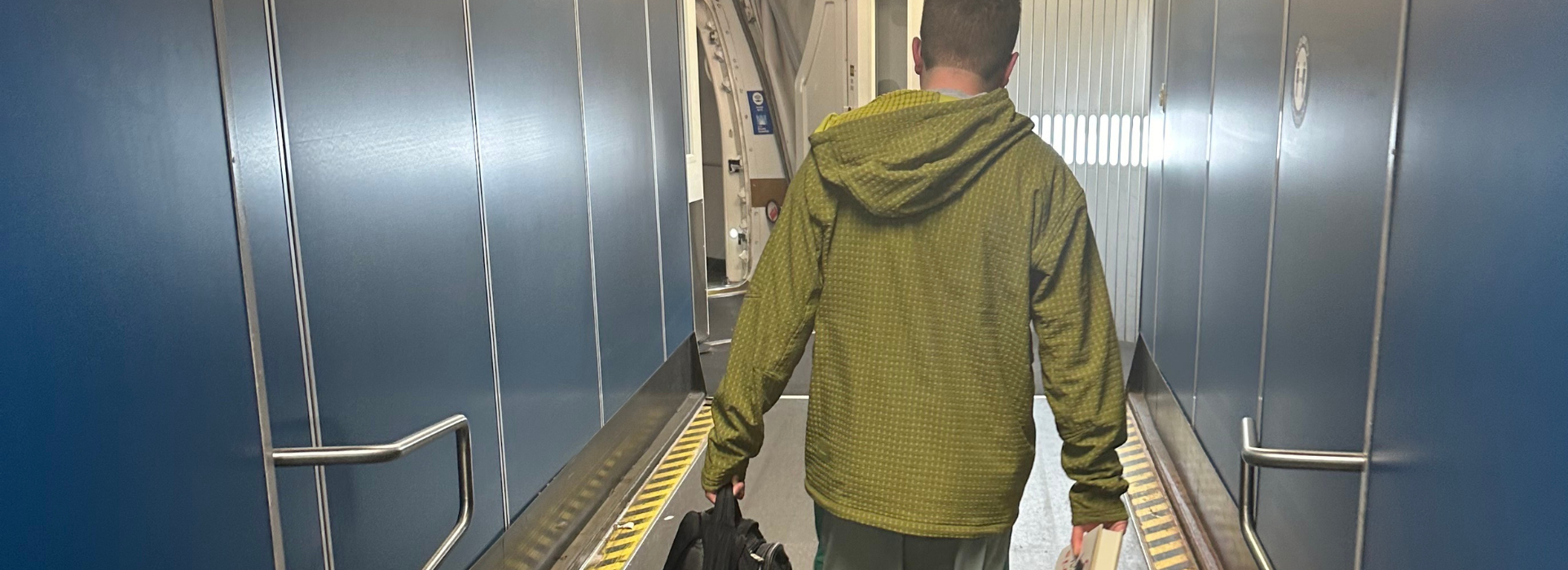Caregiving can feel overwhelming, especially when you're trying to keep track of all the...

Traveling with Disabilities or Medical Needs? Follow These 9 Essential Tips for a Smooth Journey
Traveling with disabilities or medical needs can require a bit of extra planning, but with the right steps, it’s possible to enjoy a safe and comfortable journey. Here’s a guide to help you prepare, ensuring all necessary accommodations are in place and that the process is as stress-free as possible.
1. Contact TSA Cares
TSA Cares is a helpline designed specifically for travelers with disabilities and medical conditions. If you need assistance with screening or have questions about bringing medical devices, medications, or mobility aids, reach out to TSA Cares at least 72 hours before your flight. They can also arrange for a Passenger Support Specialist to assist you at the airport.
2. Know the Guidelines for Medical Equipment and Mobility Aids
Check TSA’s guidelines on mobility aids and medical devices to know what to expect during screening. Items like wheelchairs, oxygen tanks, and CPAP machines are allowed but may require additional screening. Consider labeling medical devices and packing spare batteries to avoid delays or issues.
3. Traveling with a Support Animal
If you’re traveling with a service animal or emotional support animal, it’s essential to prepare in advance. Each airline may have different requirements, but most require documentation from a licensed healthcare professional confirming your need for the support animal. Be sure to:
- Notify the Airline: Contact your airline at least 48 hours before your flight to inform them you’ll be traveling with a support animal. They can provide details on requirements and documentation.
- Prepare Documentation: Bring necessary documentation, including a current health certificate and vaccination records, especially if traveling internationally.
- Understand Screening Procedures: Support animals will go through the TSA checkpoint with you. They must be harnessed or leashed, and TSA officers may conduct additional screening for both you and your animal.
- Plan for the Animal’s Comfort and Safety: Bring essential items like a travel bowl, food, waste bags, and any medications your animal might need. Consider scheduling breaks for the animal, especially during layovers.
4. Pack Medications and Medical Supplies Thoughtfully
Pack medications in their original containers, and consider a small, easily accessible bag for any essential items. Although there are limits on liquid quantities for carry-ons, medically necessary liquids are allowed in larger quantities. Inform the TSA officer of any such items and place them separately for screening.
5. Plan for Accessibility Needs
Contact your airline and hotel ahead of time to ensure they can accommodate any specific accessibility requirements. This might include arranging for early boarding, requesting accessible seating, or ensuring that hotel rooms are equipped with grab bars, roll-in showers, or other accessibility features.
6. Prepare Necessary Documentation
While documentation is not required to bring medical devices or medications, having a doctor’s note explaining your medical needs can be helpful, particularly if you’re traveling internationally.
7. Arrange for Mobility Assistance at the Airport
If you or your travel companion need a wheelchair or mobility assistance, notify the airline at least 48 hours in advance. This service is typically complimentary and can ease the process of navigating the airport and boarding.
8. Be Ready for Screening Procedures
Travelers with disabilities or medical devices may go through alternative screening methods. TSA officers are trained to be respectful and thorough, but if you prefer, you can request a private screening area.
9. Stay Informed and Empowered
For travelers with disabilities or those accompanying someone with specific needs, having all the right information ahead of time can make a world of difference. Keep TSA Cares and relevant travel information on hand, and don’t hesitate to advocate for any necessary accommodations along the way.
By taking these steps, you can ensure a safer, more comfortable travel experience. For more detailed information and resources, visit TSA’s official page on traveling with disabilities and medical conditions. With these preparations, you can focus on enjoying the journey, confident that your travel needs are well taken care of. Safe travels!



.png?height=200&name=Copy%20of%20FCC%20Blog%20Image%20(2).png)

Join The Conversation!